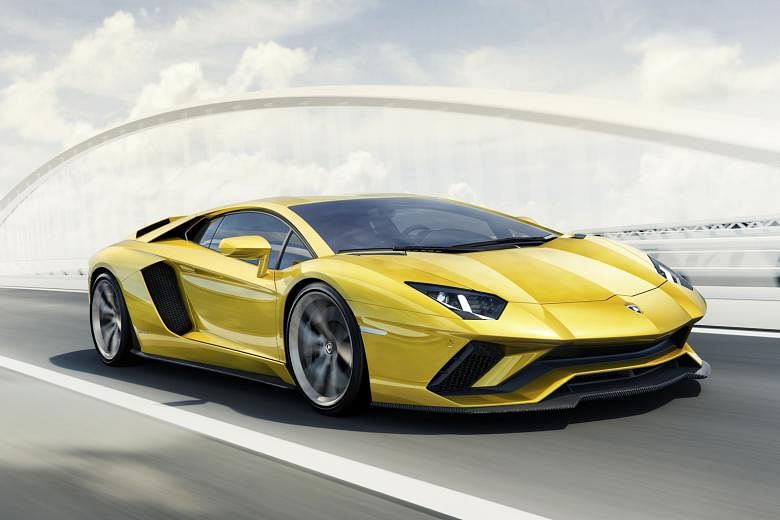Six years after it released the Aventador, Lamborghini is unveiling a new version of its flagship car.
On top of a new nose, the Aventador S also gets a more defined waistline, thanks to larger, more angular air intakes that cut deeper into the bodywork just behind the door.
Its rear-wheel arch is inspired by the Lamborghini Countach and incorporates an air intake.
At the rear is a new cluster of exhaust pipes and below that, a new diffuser for even more downforce.
Lamborghini has not switched to turbos, but has improved the power of the Aventador's naturally aspirated V12 from 700bhp to 740bhp.
-
SPECS / LAMBORGHINI AVENTADOR S
-
Price: From $1.59 million without COE
Engine: 6,498cc 48-valve V12
Transmission: Seven-speed robotised manual with paddle shift
Power: 740bhp at 8,400rpm
Torque: 690Nm at 5,500rpm
0-100kmh: 2.9 seconds
Top speed: 350kmh
Fuel consumption: 16.9 litres/100km
Agent: EuroSport Auto
The exhaust system uses a lightweight alloy to shave 6kg off its weight. That offsets a 6kg rear- wheel steering system which gives the huge Aventador a smaller turning circle and greater agility at speeds below 80kmh.
A back-to-back comparison with the pre-facelift Aventador reveals a stark difference. The revised car needs much less steering input - it seems to curl around the slalom with a fluency that beggars belief.
At the Ricardo Tormo Race Track in Valencia, the Aventador S was driven hard under wet conditions and even harder after the circuit had dried.
The four-wheel steering system gives the car a wider range of neutrality around the track, removing low-speed understeer and reducing high-speed oversteer. Lamborghini claims the system alone can cut about a second off each minute of lap time.
For hot laps, we had instructors pacing us in a 750bhp Aventador SV, which is, of course, faster. But in low-speed corners, where the huge wings of the SV do not generate much downforce, the Aventador S could keep up. This is remarkable for a car that has 10bhp less.
Another signature feature, whether by design or accident, is the awe-inspiring sight of blue flames shooting out of the tailpipes as the engine hits full revs.
With 40bhp more, the car appears more eager and its exhaust note develops a metallic timbre.
On the track, the Aventador S is in its element. But on nearby mountain roads, it scythes confidently through the bends.
Sport mode is usable in most situations. Even Corsa mode, which forces one to shift manually, is not too stiff for mountain roads, thanks to an adaptive suspension system.
Besides Strada, Sport and Corsa, there is Ego mode, which allows the driver to pick his own combination of steering, traction/stability and suspension settings.
Lamborghini has made low- speed shifts smoother in Strada (normal) mode, but the transmission is not as smooth as dual-clutch equivalents.
From this year, the Aventador S replaces the LP700-4 as the entry variant Aventador.
While the S brings more power, the more pertinent changes are to the styling and the chassis.
The most noteworthy addition is undoubtedly rear-wheel steering. Even so, the Aventador S is still not an ideal town car. But it sure is an incredibly thrilling one.
•The writer contributes to Torque, a motoring monthly published by SPH Magazines.

